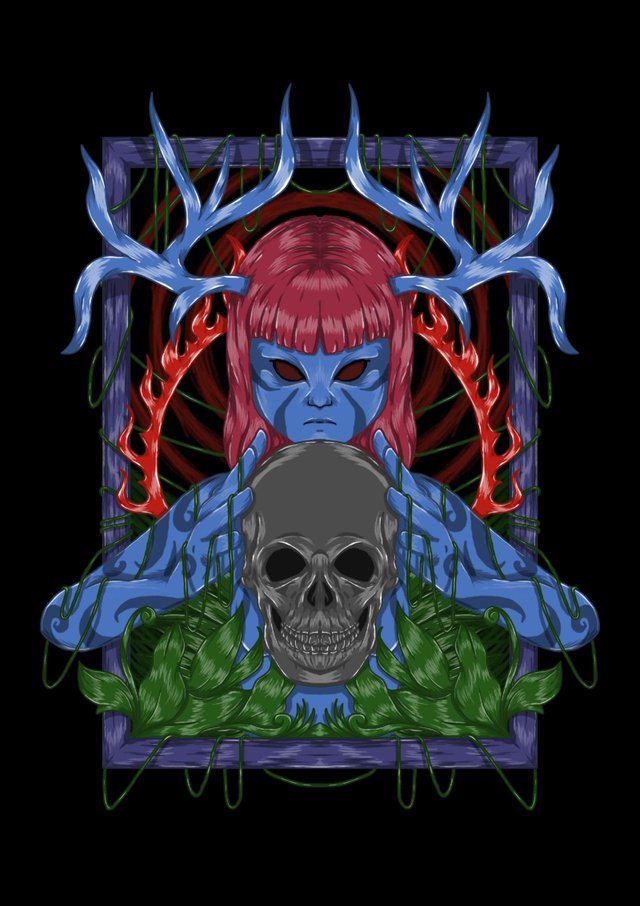Anggal Pantaka

Death is an unavoidable part of life. All living things in the world will surely die at some point. It has become a culture that sticks in the minds of most people that death is something scary. However, if we want to look at it from a different perspective, we can see death as a form of our contribution to the world. Death opens the gate to the living space for new things to be born in the world, death seems to provide an opportunity for a new era to grow and develop.
Death is also often seen as the end of life and is a statement of the disappearance or completion of the story of a creature that has ever lived in the world. But if we pay attention, the story of life does not stop there. A person or figure who has died physically seems to be alive and surpasses death in other forms, one of which is the lifetime memory that is embedded in the minds of the surrounding world.
This work is an illustration of the thoughts mentioned above which are symbolized by the skull object as a symbol of death, horns as a symbol of something beyond, human as a symbol of something that has ever lived, plants as a symbol of the world, and a circle of fire as a symbol of the spirit which is the embodiment of form of memory.
The title "Anggal Pantaka" chosen for this work is taken from Sanskrit; "Anggal" which means not fully / not completely and "Pantaka" which means dead. So Anggal Pantaka can be interpreted as Not Completely Dead and was chosen to represent the intent of this work.